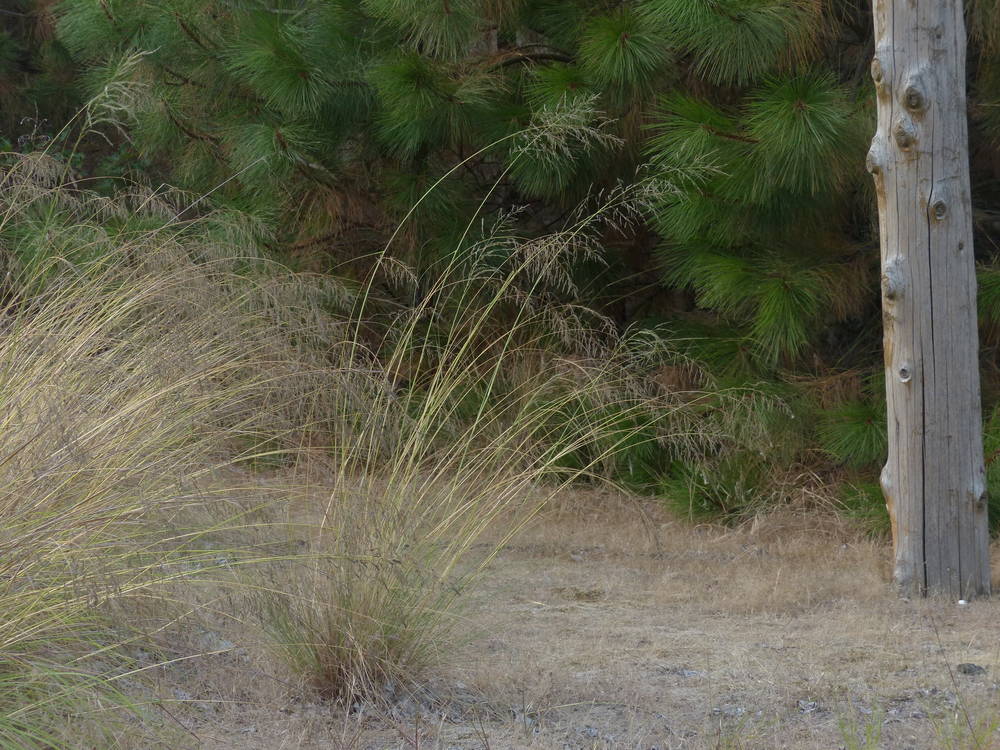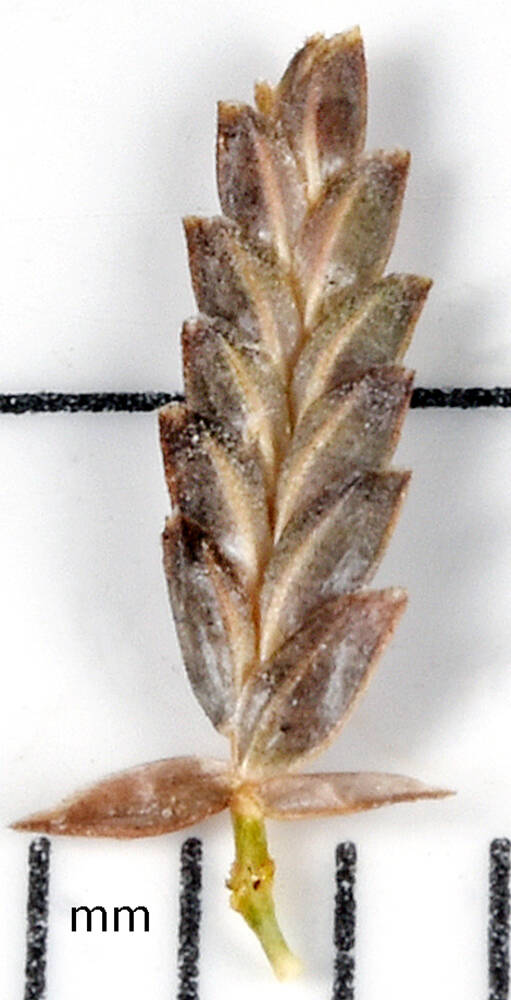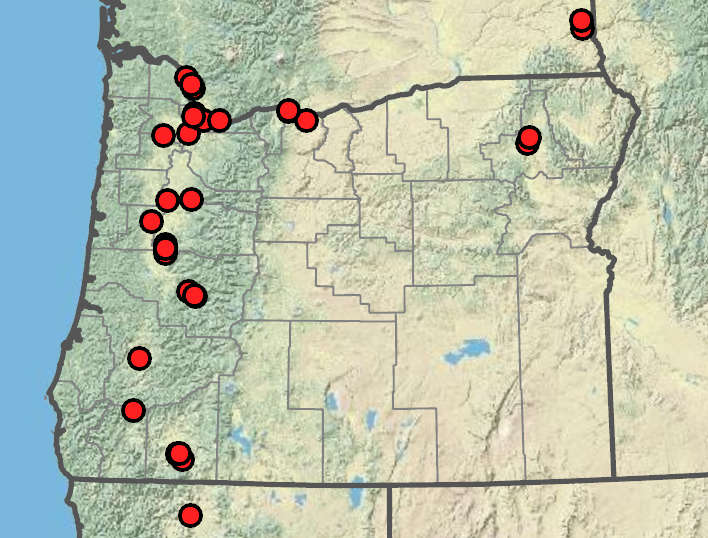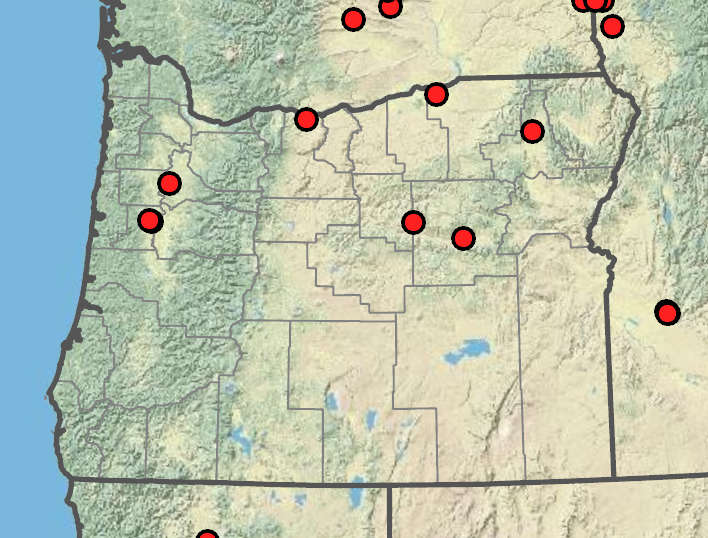Eragrostis curvula
Eragrostis minor
weeping lovegrass
little lovegrass
erect, glabrous.
erect to decumbent, sometimes with a ring of glandular tissue below the nodes.
mostly basal;
sheaths with scattered hairs to 9 mm;
blades 12–50(65) cm × 1–3 mm.
sheaths sometimes glandular on the midveins; tops with hairs to 4 mm;
blades 1.5– 10 cm × 1–3(4)mm;
margins sometimes with saucer-like glands.
16–35(40) × (4)8– 24 cm; ovate to oblong; open;
primary branches 3–14 cm, diverging 10–80° from the inflorescence axis;
pedicels 0.5–5 mm, appressed; flexible;
disarticulation irregular or acropetal;
basal rachilla internodes persistent.
4–20 × 2.2–8(10)cm; ovate; open to contracted;
rachises sometimes with glandular spots or pits below the nodes or rarely with a glandular ring;
glands usually dull; greenish gray to straw-colored;
primary branches 0.5–6 cm, diverging 20–100° from the inflorescence axis;
pedicels 1–4 mm; stiff; straight, divergent, usually with a distal ring of saucer-like glands;
disarticulation acropetal;
paleas persistent.
4–8.2(10) × 1.2–2 mm, gray to yellowish, with 3–10 florets.
4–7(11) × 1.1–2.2 mm, mostly reddish purple to greenish to occasionally grayish, 7–12(20) florets.
lanceolate; hyaline;
lower glumes 1.2–2.6 mm;
upper glumes 2–3 mm.
broadly ovate, membranous;
lower glumes 0.9–1.4 mm;
upper glumes 1.2–1.6 mm.
1–1.7 mm, ellipsoid to obovoid, dorsally compressed, with or without a shallow; broad groove.
0.4–0.7 mm, ellipsoid, not grooved.
1.8–3 mm; ovate, membranous;
lateral veins conspicuous;
tips acute.
1.4–1.8 mm, broadly ovate, membranous;
keels occasionally with 1–2 saucer-like glands;
tips acute to obtuse.
1.8–3 mm; hyaline to membranous, obtuse.
1.3– 1.7 mm; hyaline;
keels smooth or minutely scabrous.
3, 0.6–1.2 mm; reddish brown.
2, 0.2–0.3 mm; reddish brown.
=40, 60, 80.
=40.
Eragrostis curvula
Eragrostis minor
Roadsides, weedy meadows, disturbed areas. 0–900m. BW, Casc, Col, ECas, Sisk, WV. CA, WA; east across southern US to VA and FL, south to Mexico; southern Africa. Exotic.
Eragrostis curvula is a densely cespitose plant that produces a nodding panicle in late summer. It slightly resembles a fineleaved fescue.
Disturbed places, pavement cracks. 50–900 m. BW, Col, Lava, WV. CA, ID, NV, WA; throughout most of Canada and US; Europe. Exotic.
Eragrostis minor closely resembles E. pectinacea, which is glandless. Similar Eragrostis cilianensis has denser inflorescences and wider spikelets.
Barbara Wilson, Richard Brainerd, Nick Otting
Barbara Wilson, Richard Brainerd, Nick Otting
- Local floras:
BC,
CA,
OR,
WA
- Local Web sites:
CalFlora,
CalPhotos,
Flora NW,
PNW Herbaria
WildflowerSearch
iNaturalist (observations)
USDA Plants Database
- LBJ Wildflower Center
- SEINet
- Plants of the World Online
- Encyclopedia of Life
- Wikipedia
- Google Image Search
- Local floras:
BC,
CA,
OR,
WA
- Local Web sites:
CalFlora,
CalPhotos,
Flora NW,
PNW Herbaria
WildflowerSearch
iNaturalist (observations)
USDA Plants Database
- LBJ Wildflower Center
- SEINet
- Plants of the World Online
- Encyclopedia of Life
- Wikipedia
- Google Image Search





